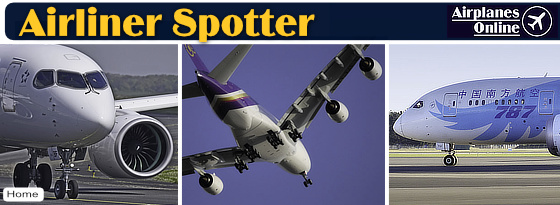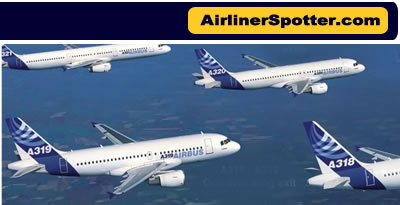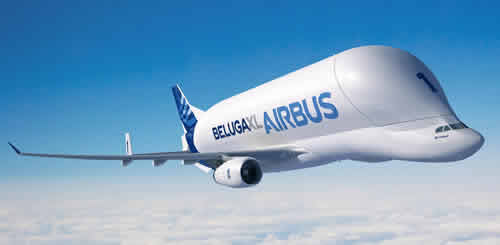Airbus Airliner Spotting Guide
How to Tell Airbus Jetliners Apart
The twin-engine, wide body A300 was the first aircraft produced by Airbus Industrie, a consortium of European aerospace manufacturers, now a subsidiary of Airbus Group.
| Airbus Commercial Aircraft - Details | |
| Wide-Body | Narrow-Body |
| Airbus A300 | Airbus A220 |
| Airbus A310 | Airbus A318 |
| Airbus A330 | Airbus A319 |
| Airbus A340 | Airbus A320 |
| Airbus A350 | Airbus A321 |
| Airbus A380 | |
| Airbus Beluga | |
The basic fuselage of the A300 was later stretched into the Airbus A330 and A340, and shortened into the Airbus A310.
The Airbus A320 is a short-to-medium range, twin-engine, narrow-bodied airliner. It was launched in March of 1984, first flew in February of 1987, and was first delivered in March of 1988.
The A320 family was subsequently expanded to include the stretched Airbus A321 (1994), the shortened A319 (1996), and the even shorter A318 (2003). Delivery to airlines has begun on the A320neo (new engine option).
The Airbus A350 is the first Airbus composite aircraft with both fuselage and wing structures made primarily of carbon-fibre-reinforced polymer.
The double-decked Airbus A380 is the world’s largest commercial aircraft flying today, with the capacity to carry 544 passengers in a comfortable four-class configuration, and up to 853 in a single-class configuration that provides wider seats than its competitor.
In July of 2018, Airbus completed its acquisition of the Bombardier C-Series, and renamed the two airliners the Airbus A220-100 and Airbus A220-300.
With the wide variety of Airbus jet airliners serving the worldwide travel market today, identification of individual models can be a bit difficult.
Included below is a quick and easy guide to identifying the differences between Airbus jet airliners of the day.
Wide Body Airbus Airliners |
Airbus A300 and A310
| The A300 has a longer fuselage compared to the smaller A310. When looking at the A310 from the side (see image below), note that it has only two doors; the A300 has three doors on each side. |
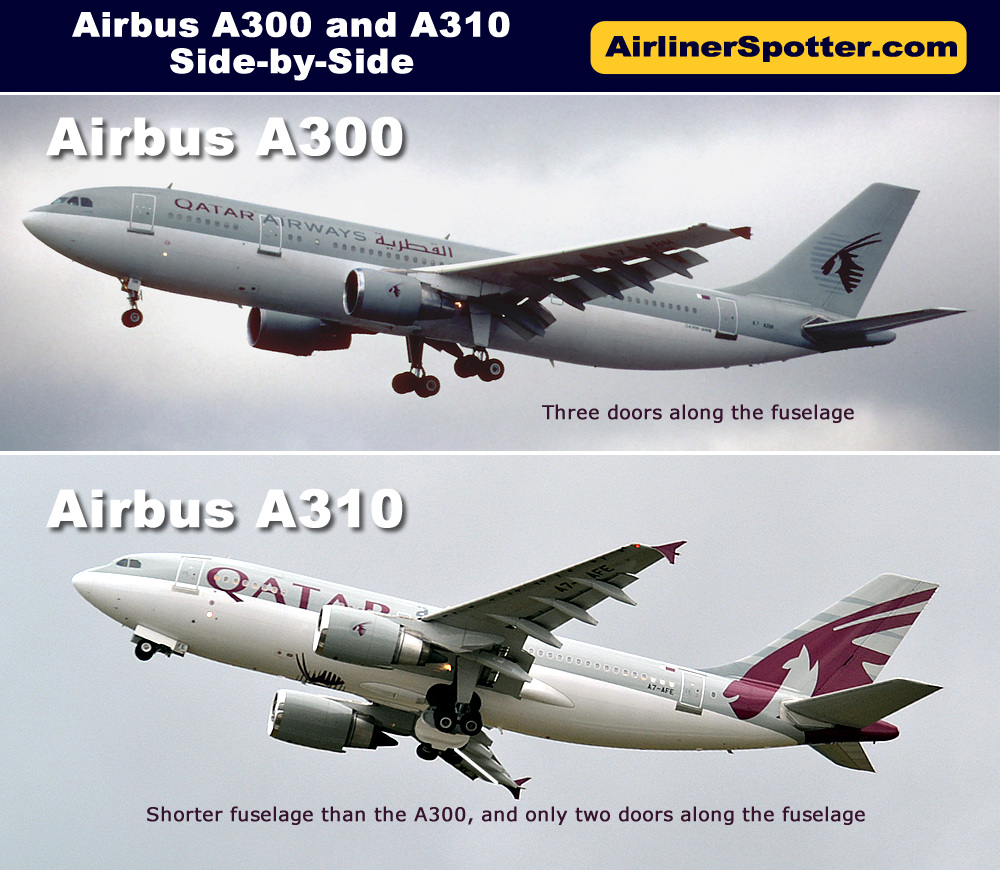 |
Airbus A330
Airbus A330 spotter's guide: notched windshield window, two engines (one under each wing), one passenger deck the length of the fuselage, main landing gear fall to the rear, and a straight fuselage under the tail structure. The A330 also features a "bulged" area under the center wing section, which the similar A300 does not. |
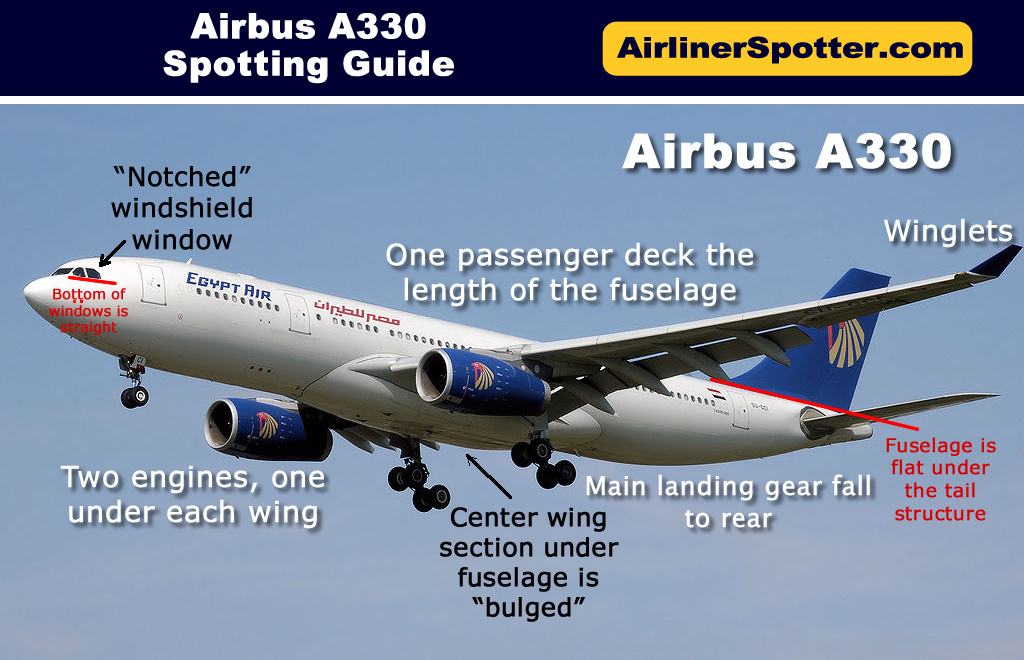 |
Airbus A340
If you spot a four-engine airliner that is not a Boeing 747 or an Airbus A380, then it is probably an Airbus A340.
The Airbus A340 is a single-deck, wide-body airliner, and features two engines under each wing, and three sets of main landing gears, one of which is in the middle of the underside of the fuselage.
The A340 is used on long-haul, trans-oceanic routes due to its immunity from ETOPS restrictions. However, as the reliability and fuel efficiency in engines have improved, airlines have gradually phased out the A340 in favor of the more economical Boeing 777 twinjet. Airbus has positioned the larger variants of the Airbus A350 as a successor.
See more Airbus A340 photographs and spotting tips
 |
Airbus A350-900
The Airbus A350-900 design features twin-engines, a single passenger deck, a distinctive nose and winglets, and has an overall length of 219' 5". Its two 4-wheel main landing gear bogies tilt forward like the Boeing 767. The main landing gear bogies on the A350-1000 have no tilt. |
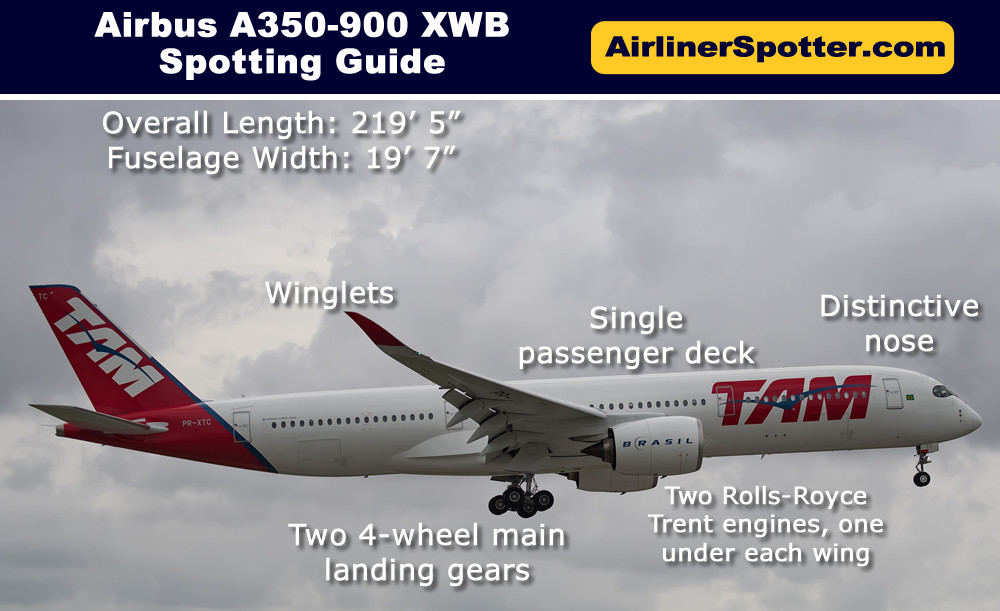 |
Airbus A350-1000 Spotting Tips
The A350-1000 design evolved from the A350-900, via the addition of 6 frames in front of the wing, and 5 frames behind. The airliner received FAA and EASA certification on November 21, 2017. Airbus made the first A350-1000 delivery in late 2017 to launch customer Qatar Airways.
Airbus A350-1000 design highlights include a twin-engine configuration, a single passenger deck, a distinctive nose and winglets. Its overall length is 242' 7". It has two 6-wheel main landing gear bogies which have no tilt, unlike the A350-900 whose bogies tilt forwrard.
It is assigned ICAO Aircraft Type Designator A35K.
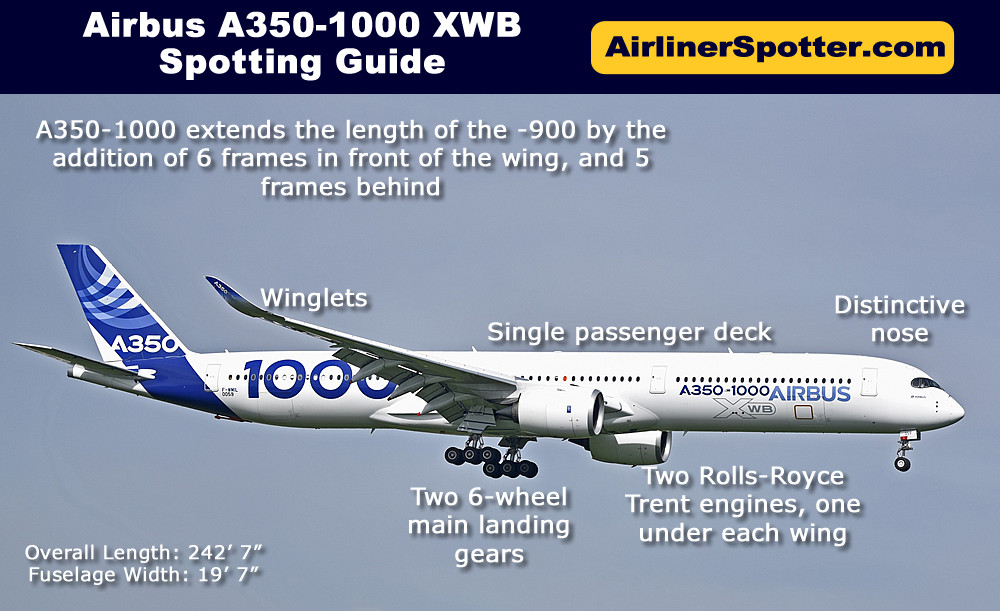 |
| Airbus A350-1000 showing the design of the XWB blended winglets |
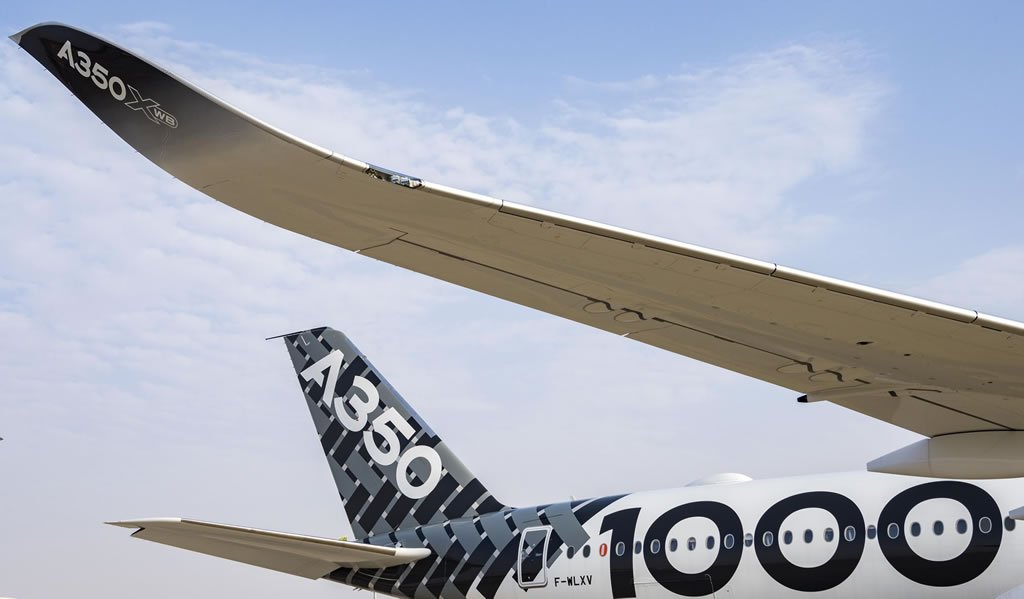 |
Airbus A380
The A380 is easy to spot, with its two full-fuselage passenger decks, bulbous nose, and four engines. A total of 251 A380s were built before the end of production. Shown here is an Emirates Airbus A380. |
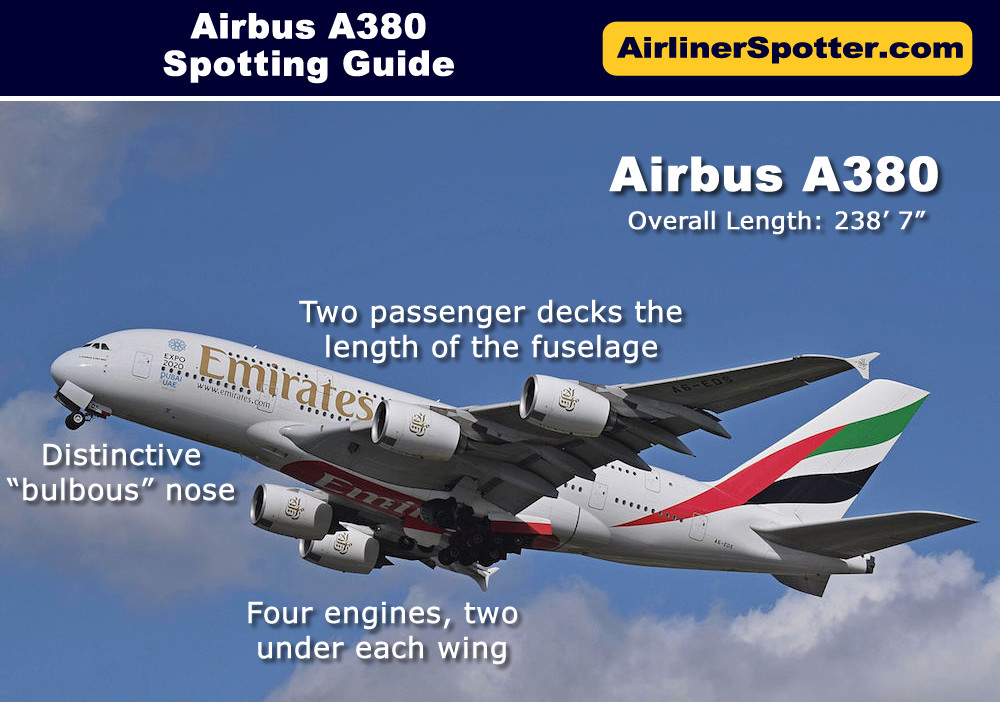 |
Narrow Body Airbus Airliners |
Airbus A220
Shown below is a side-by-side comparison of the the Airbus A220-100 and A220-300, with its two engines mounted under the wings, winglets, two dual-wheel main landing gear and four-piece windshield. Each model shares the same wingspan, fuselage width and height. The A220 Series design includes two cabins doors on each side of the fuselage, and one emergency exit over the wing. The 220-100 features 12 windows in front of the emergency exit, while the 220-300 has 16-17 windows. |
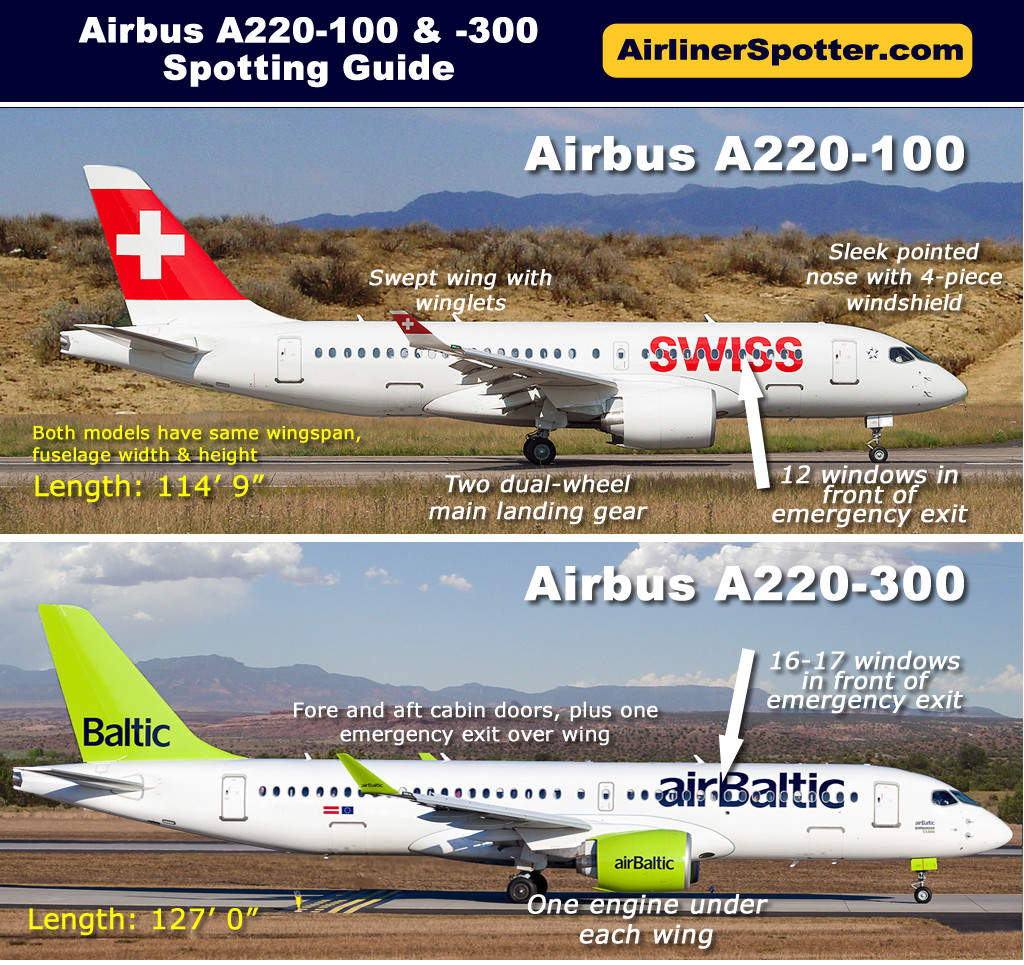 |
Airbus A318The Airbus A318 is the smallest member of the A320 family. A total of 80 A318 airliners were delivered between 2003 and 2013. Shown below is an Air France A318. |
Airbus A319An Airbus A319-100 of Lufthansa is shown below ... note the two cabin doors, and single emergency exit door over the wing. The A320 has two emergency exit doors. |
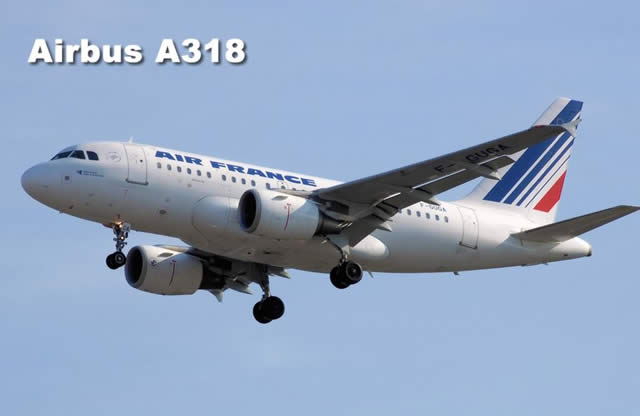 |
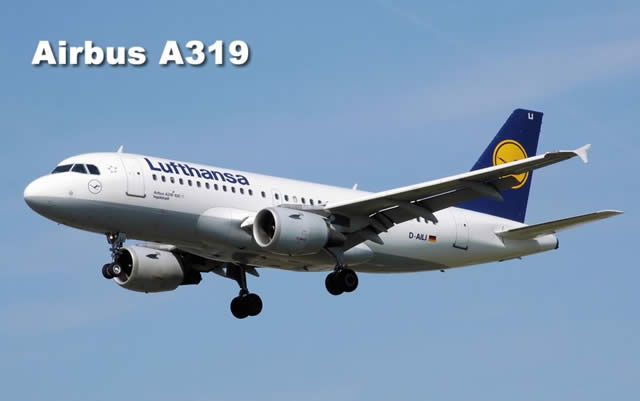 |
Airbus A320
| The A320 has two engines under the wings, two dual-wheel main landing gear, two cabin doors along each side of the fuselage, two emergency exits over the wing, and the classic Airbus nose featuring the "notched" window. |
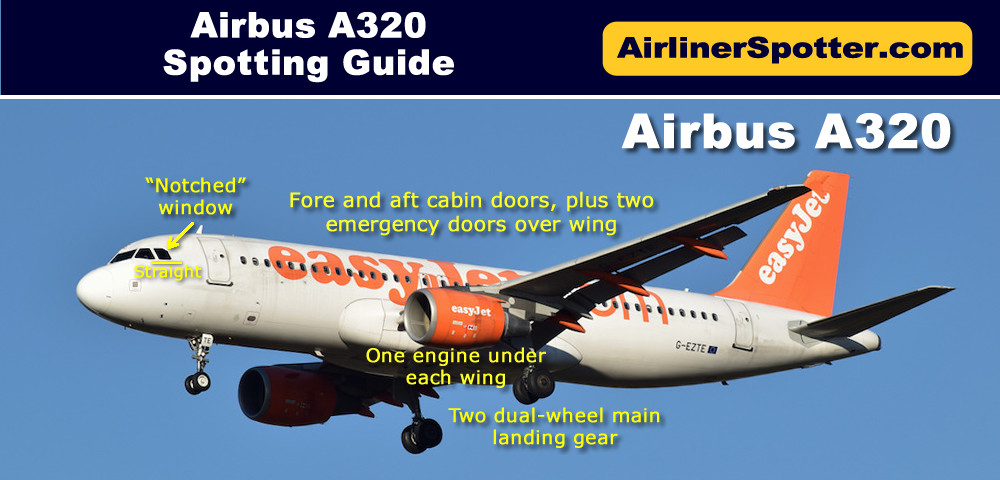 |
| Airplane spotter's guide for the Airbus A319 and A320 is included below. The A319 has only one emergency exit door over each wing, while the A320 has two exit doors over the wing. |
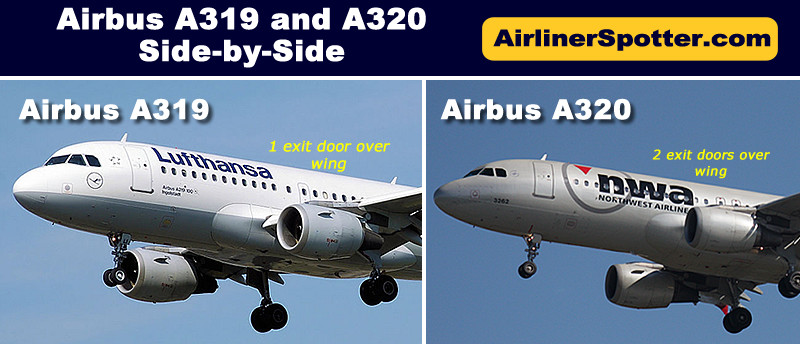 |
A Few Notable Differences Between Boeing and Airbus Airliners
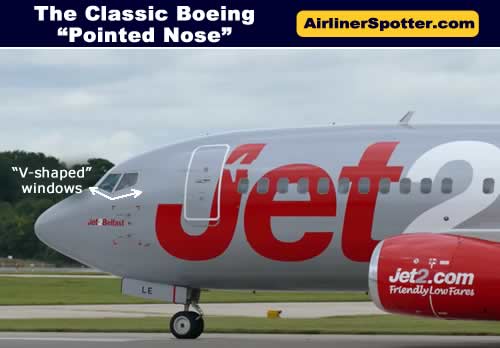 The classic Boeing airliner has a "pointed nose" as seen here on a 737. Many also have a "V-shaped" side cockpit windshield, as seen on the 737, 757, 767 and 777. |
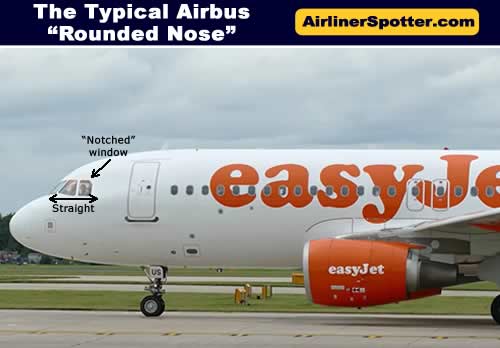 The typical narrow-body Airbus airliner features a "rounded nose" with the side windshield straight across the bottom. The rear cockpit window is "notched" on the A300, A310, A318, A319, A320, A321, A330 and A340 |
Comparison of the typical Boeing and Airbus cockpit window design and configuration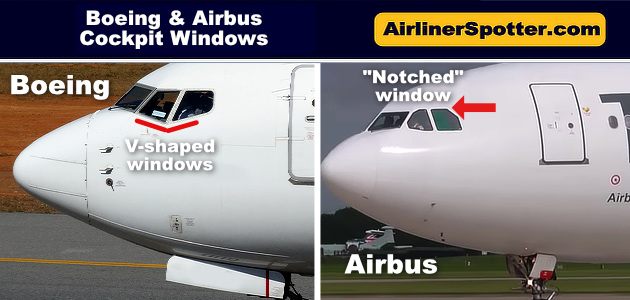 |
|
Airbus A321
| The A321 has two engines under the wings, two dual-wheel main landing gear, four cabin doors along each side of the fuselage, and the classic Airbus nose featuring the "notched" window. |
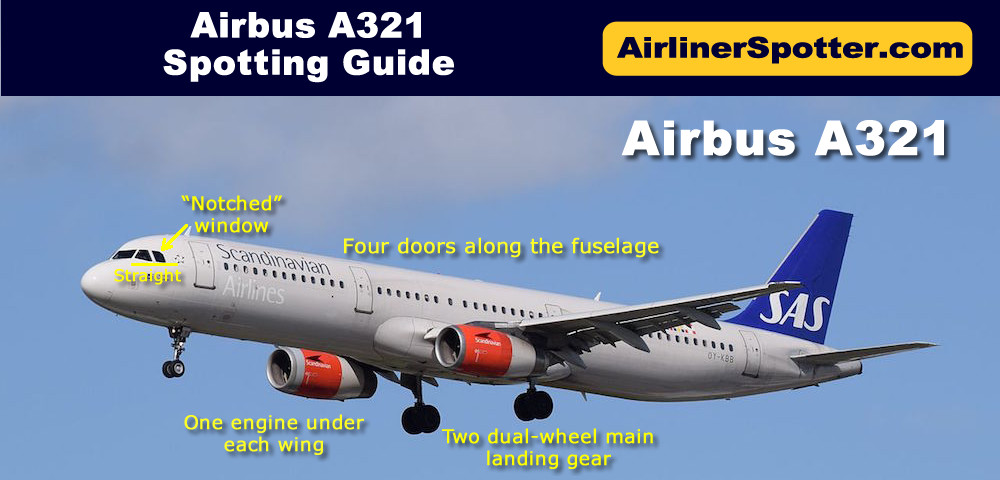 |
| Spotting and identification guide for the Airbus A320 family of jetliners: A318, A319, A320 and A321 |
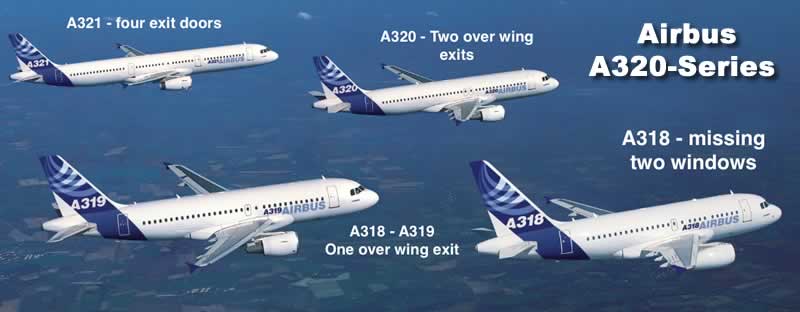 |
Airbus Airliner Operations at Night
While spotting airliners during the day can sometimes be difficult, nighttime air operations make the process even harder.
One way to identify Airbus airliners at night is by examining the pattern of the white light at the tip of the wing, known as the strobe.
Boeing wing strobe lights flash only once, while Airbus airliners flash twice in rapid succession.
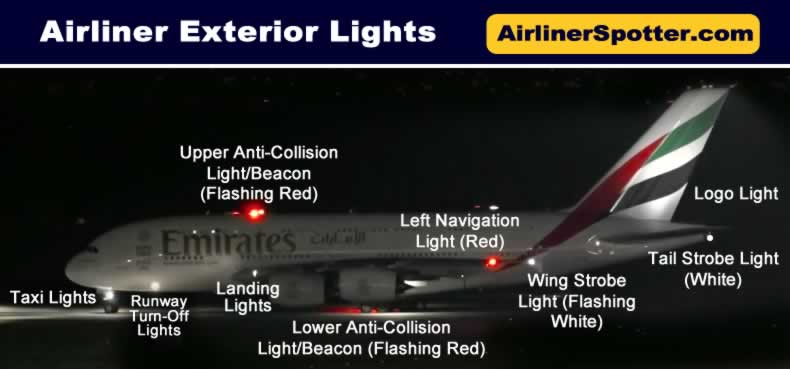 |
Airbus Beluga
Easy to spot and identify, the Beluga, based on the A330, is used by Airbus to transport oversized air cargo. Also known as A300-600ST Super Transporter, the company’s five existing Belugas play a key role in keeping its production and assembly network operating at full capacity. The next generation transport, the Beluga XL, made its first flight on July 19, 2018, and entered service on January 9, 2020. |
Airbus Beluga
|
Airbus Aircraft Numbering System
The Airbus airliner numbering system is in the form Axxx-yyy, beginning with the "A" and followed with a 3-digit aircraft model number, e.g., A220, A319 or A380.
Following the model number is a dash and 3-digit number in this format, designating:
- Aircraft series (e.g., 2 for a -200 or 3 for a -300 series)
- Engine manufacturer code (see table below)
- Engine version number
| Airbus Engine Code | Engine Manufacturer |
| 0 | General Electric (GE) |
| 1 | CFM International (GE/SNECMA - Safrean) |
| 2 | Pratt & Whitney (P&W) |
| 3 | International Aero Engines |
| 4 | Rolls-Royce |
| 5 | CFM International (CFM LEAP-1A for A320neo Family) |
| 6 | Engine Alliance (GE and P&W) |
| 7 | Pratt & Whitney (PW1100G for A320neo Family) |
Airbus defense and military aircraft have numbers in the form "A4xx". The primary product in this market segment is the Airbus A400M Atlas.
| Air France Airbus A320-214, Registration F-GLGM |
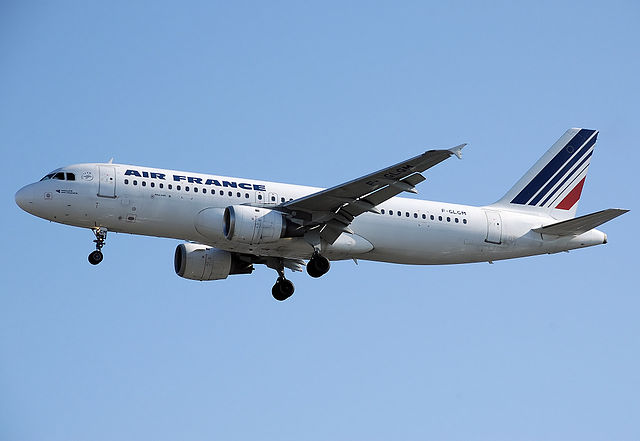 |
| Air Mauritius Airbus A340-313, Registration 3B-NBD |
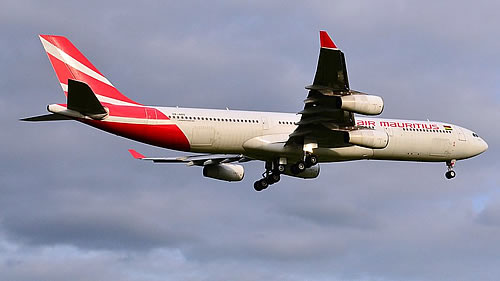 |
One or more letters are sometimes added at the end, using the codes below. For example, A321-271NX.
- C - combi version (passenger/freighter)
- F - freighter model
- N - new engine option (neo)
- R - long range model
- X - enhanced model
Airbus Final Assembly Faciliites
Airbus maintains nine final assembly lines (FALs) at five locations worldwide that produce the company’s full range of single-aisle and wide-body jetliners.
- Toulouse, France (four FALs): A320 Family, A330, A350 and A380
- Hamburg, Germany (one FAL): A320 Family
- Tianjin, China (one FAL): A320 Family
- Mobile, United States (two FALs): one for the A320 Family, one for the A220 Family
- Mirabel, Canada (one FAL): A220 Family
Airbus Operations in Toulouse, France
Toulouse, in the south of France, is home to Airbus’ headquarters, located in the southwest region of Occitanie, near the Toulouse-Blagnac Airport (LFBO). It has final assembly lines for all Airbus commercial aircraft families, is home to major production facilities for helicopter, space and defence activities, and includes locations for leading-edge research.
The area around the Airport has final assembly lines for the A320, A330, A350 XWB and A380 Families, as well as facilities for passenger cabin outfitting and painting of completed aircraft.
The Airbus Training Centre in Toulouse features full-flight simulators for all the company’s jetliner types, providing training for customer airlines’ flight crews, maintenance staff and cabin attendants, as well as performance and operational staff.
The airport features two runways, the longest of which is 11,483ft (3,500m).
Panoramic view of Airbus facilities at the Toulouse-Blagnac Airport (LFBO) (All photos by DELEHELLE Eric) |
 |
Airbus facilities at the Toulouse-Blagnac Airport (LFBO) |
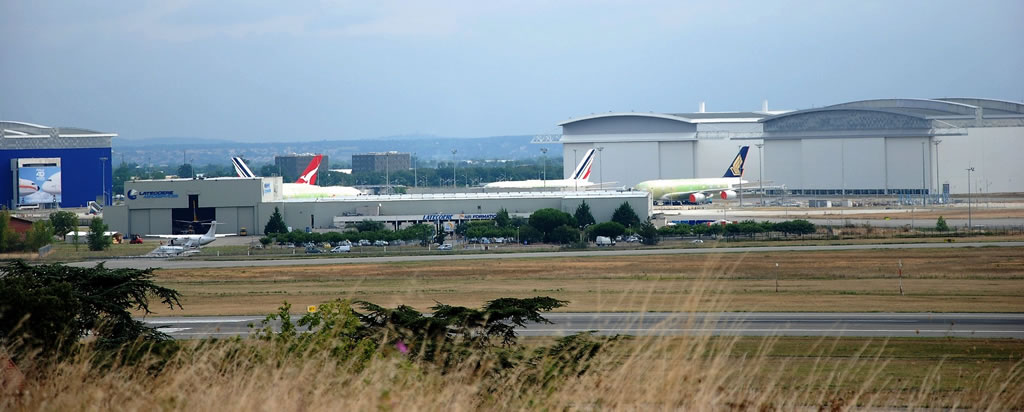 |
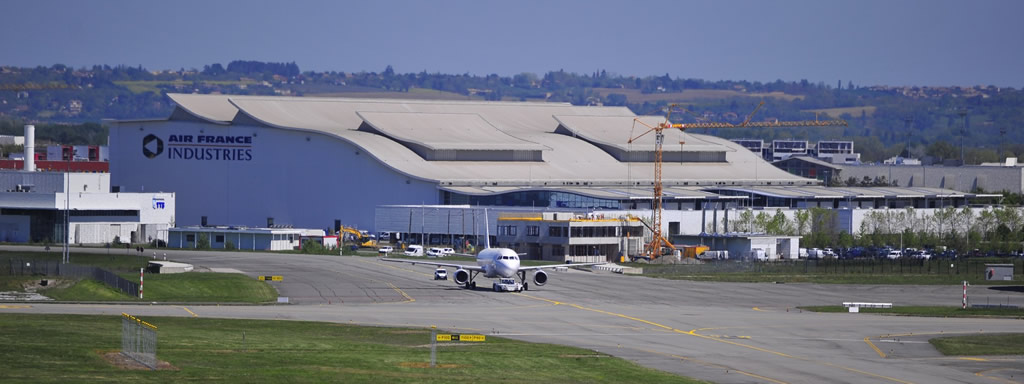 |
Airbus A350-900 at Toulouse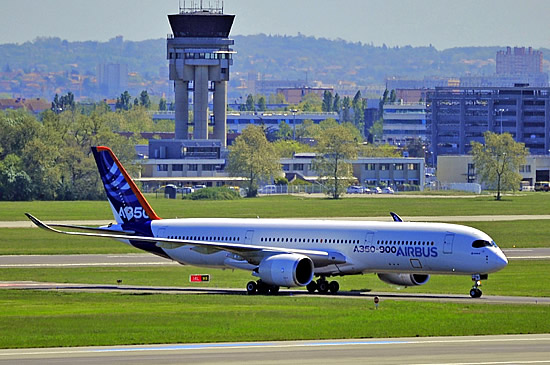 |
Airbus Toulouse Delivery Center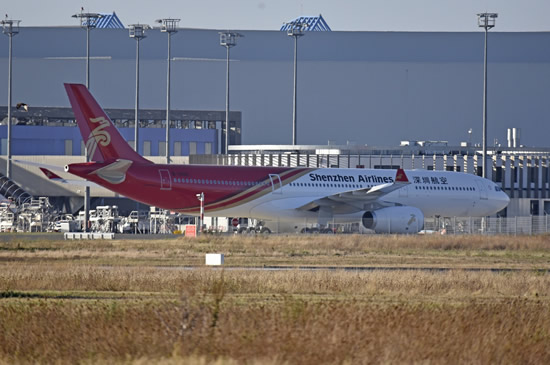 |
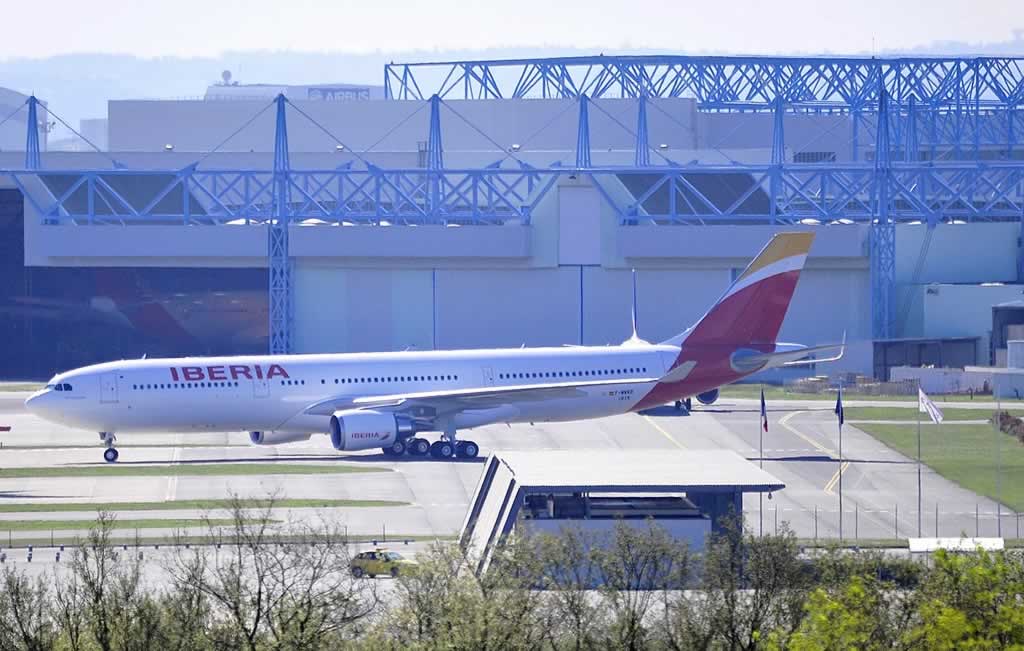 |
Airbus Manufacturing in Mobile, Alabama
The Airbus U.S. Manufacturing Facility officially began producing its first aircraft, an A321 destined for JetBlue, on September 14, 2015. Since then, the Airbus production team has delivered more than 180 aircraft to eight customers.
Today, the facility assembles Airbus A320, A321 and A220 airliners.
Situated on Mobile Bay within the Mobile Aeroplex at Brookley, the Airbus facilities are located at Mobile Downtown Airport (KBFM), which features two runways, the longest of which is 9,618ft (2,932m). Read more at the website of Airbus Alabama.
Spearheaded by Airbus and the State of Alabama, Flight Works Alabama is a comprehensive aerospace exhibition and education center, now open in Mobile. Flight Works Alabama's 15,000 square foot facility houses over 40 hands-on exhibits, a classroom, workshop, fabrication room, drone aviary, and more!
Flight Works Alabama is the starting point for tours of the Airbus A320 Manufacturing Facility. Its education center provides the opportunity to tell an aviation story beyond Airbus.
| Airbus Mobile Engineering Building in Alabama (Staff Photo) |
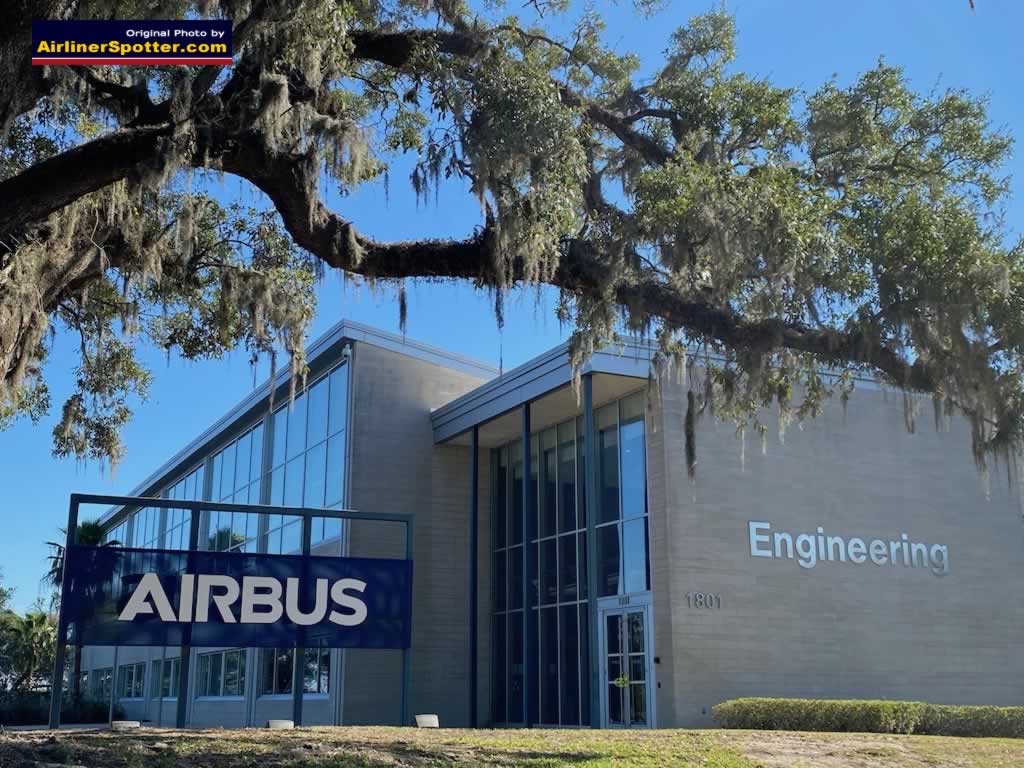 |
| Airbus Mobile Assembly Buildings in Alabama |
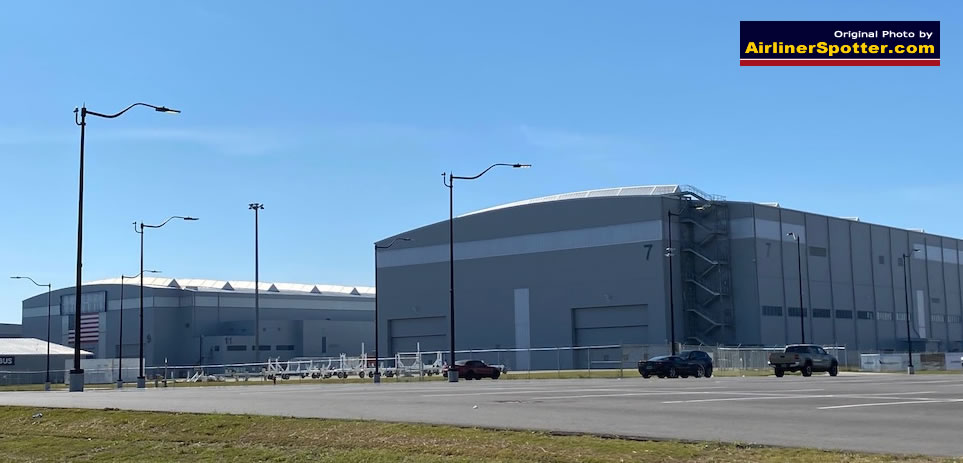 |
| Airbus Mobile Delivery Center in Alabama |
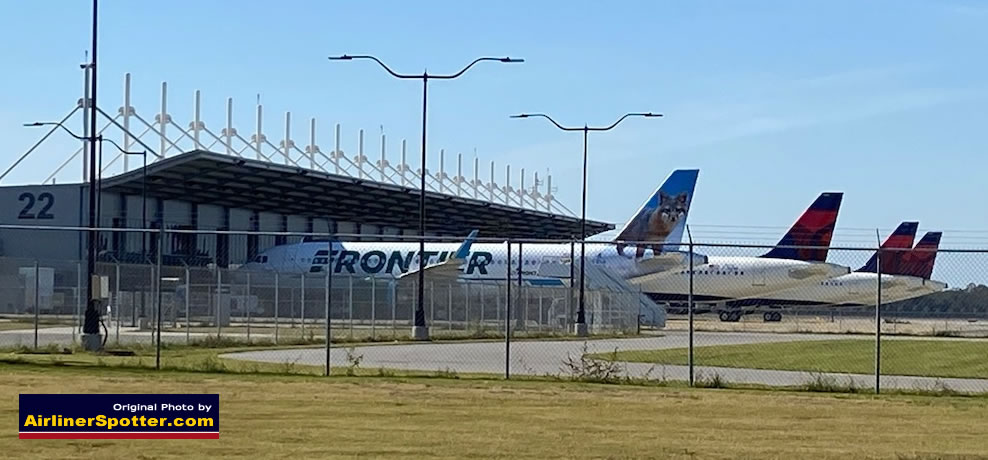 |
| The first Airbus A320 aircraft produced at the Airbus U.S. Manufacturing Facility in Mobile, Alabama, takes flight for the first time, on August 15, 2017 (photo courtesy of Airbus) |
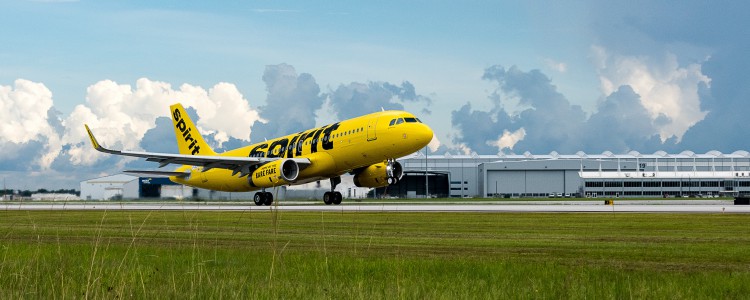 |
